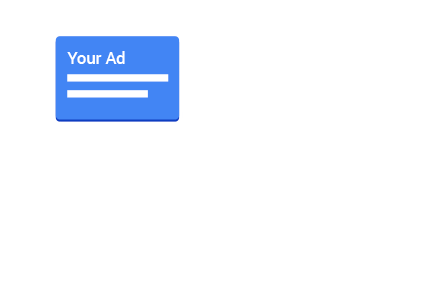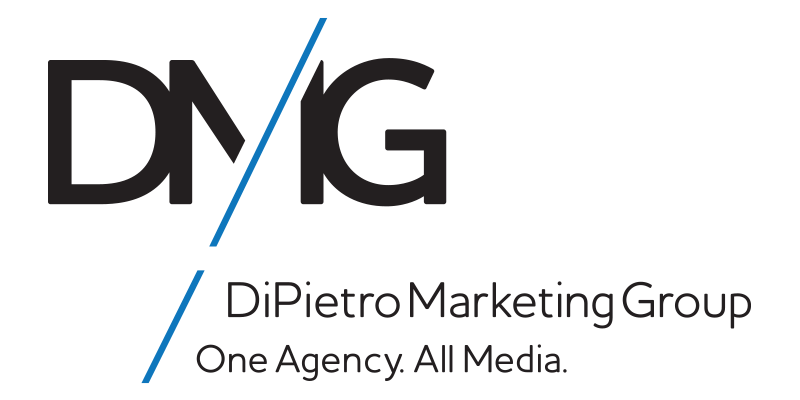The three recent (non-algo) Google updates as of this month are…
Three Digital Marketing Google Updates:
- Parallel Tracking Implementation For Google Ads
- Data Collection For Google Signals
- Video Display Ads Conversion Tracking
1. Google Ads Parallel Tracking
New Parallel Tracking Method implementation for Google Ads campaigns will help increase page load speed and user experience.
What is Parallel Conversion Tracking for Google Ads?
Parallel Conversion Tracking allows for Google’s tracking code to be run simultaneously alongside (rather than prior to) the advertiser’s landing page loading. This works to increase page load speed especially on mobile devices. (see graphic below)

Historically, when a user had clicked on a paid search ad, they were taken first to a Google landing page to load its tracking script and were only then taken to the advertiser’s landing page.
The old process, referred to as the “Linear Tracking Method,” took a few hundred milliseconds. It is doubtful many users ever noticed the delay to the naked eye.
However, when it comes to Google Page Load Speed, those milliseconds can be big, especially when on mobile devices (as well as on some older desktop browsers).
Switching over to Parallel Conversion Tracking will help increase page load speeds.
Will it be a noticeable difference? To most users, probably not, although some on mobile devices may notice a bit of a boost when using slower network connections.
The biggest impact will likely be most evident in Google Page Load Speed results for webpages being used as landing pages in conjunction with Google Ad campaigns. Of course, those page speeds can play a big impact when Google’s evaluating your landing pages.
When Did Parallel Conversion Tracking For Google Ads Start?
Google rolled this update out earlier this month, although it’s probably not yet enabled in your account.
You’ll want to be sure to use these instructions below in order to properly configure this new tracking method.
How To Enable Parallel Conversion Tracking?
Enabling Google’s new Parallel Conversion Tracking setting is pretty simple. Here’s how to do it…

- Sign in to your Google Ads account.
- In the navigation menu, click All campaigns.
- In the page menu on the left, click Settings.
- Click Account Settings.
- Go to Tracking.
- Then click the switch next to “Parallel Tracking” to turn it on.
Note:
You’ll want to test this tracking method once enabled to ensure it is working properly. To do so, simply click the Test button next to the tracking template.
This will initiate a test of some of your landing pages to check that all is working OK.
If a URL is broken, you’ll want to make sure to have it fixed immediately.
Should I Enable Parallel Tracking?
More than likely, yes, you’ll want to make sure this type of Google Ads tracking is enabled.
Not only will it give your landing pages a lift in page load speed times, but it’s also mandatory that all Google Ads accounts switch over to this tracking method by October 30th, 2018.
Note:
If you’re using third-party tracking software, you’ll want to check to make sure that this is compatible with the tracking methods currently implemented on your site. (some third-party providers may use more complex tracking methods that could require additional configurations)
Lastly, keep in mind that while not all browsers currently support this new tracking method, Google has stated that for those browsers that do not support it, Google will (automatically and seamlessly) revert back to the old Linear Tracking Model by default to ensure all conversions are still being counted.
2. Data Collection For Google Signals
Google Signals is making it easier for digital marketers and analysts to gather insightful data about user behavior across multiple devices.
What Is Data Collection For Google Signals?
This is a new facet incorporated into Google Analytics which helps measure cross device behaviors of users. This allows for better data analysis on how website visitors interact with your brand online across multiple different devices. Once enabled, it will also allow for an increase in remarketing capabilities.
Analyzing Cross-Device Behaviors
Google Signals will help provide information for analysis on users who may, for example, find your website while browsing on their mobile device, then return later from their desktop to complete a purchase or conversion at a later time.
More Accurate Data
It will also help to give more accurate data regarding users & sessions in that, if enabled, one user visiting your site two times from two different devices will be counted as such:
1 user, 2 sessions
As opposed to:
2 users, 2 sessions
Automated Insights And Reporting
Regular data mining is important, but Google has helped automate the process. They have also rolled out its own Cross Device Report (still in beta).
While it’s probably best to have a trained data analyst and/or UX expert consistently review this type of user behavior and cross device data, Google’s new automated report will help model behavior for your whole user base across different device types based off of aggregated data collected once Google Signals has been enabled.
What Data Collection For Google Signals Means…
Data such as this will help digital marketing teams better understand the customer journey across different devices by analyzing user-based reports, ultimately allowing for better optimization of user experiences.
For paid search managers, it will allow for a more holistic optimization of ad spend based on cross-device usage.
Last But Not Least: Increased Remarketing Capabilities
When creating audiences and remarketing lists, advertisers will now be able to serve ads to users across multiple devices.
This will allow for even further optimization of paid search campaigns as marketers can now reach past website visitors across multiple touch points.
This means if a mobile user visits your website, you can later show them a remarketing ad when they are on their desktop and (potentially) more likely to convert.
When Did Data Collection For Google Signals Start?
Well, the idea for such a capability was really born as soon as marketers realized there were multiple online touch points leading to conversions (Circa: the birth of the mobile web browser!?!).
This degree of attribution modeling capability has long been coveted. Google (and other marketing and analytics software providers) have been working on high-level attribution models for years and continue to take steps in the right direction (though there’s still a ways to go).
This most recent “step in the right direction” in Google Signals rolled out this past summer.
How To Enable Data Collection For Google Signals?
- Sign in to Google Analytics.
- Click GET STARTED in the blue notification banner at the top of the page, or navigate to Property column > Tracking info > Data Collection and follow the prompt in the blue dialog.
- Click through the information and activation panels.
- Read the information about Google Signals, then click CONTINUE.
- Select the properties for which you want to activate Google Signals.
Once this is enabled, you can access the new user-based data in the cross device reports as mentioned above as well as show cross device remarketing ads in Google Ad campaigns.
Should I Enable Data Collection For Google Signals?
Yes! This is a great new feature that will allow for a better understanding of the customer journey across multiple different devices so marketers can create better experiences for prospects and customers.
3. Video Display Ads Conversion Tracking
Google’s recently changed the way they report attribution for Engagement and Conversions on YouTube For Action Ads.
What Is The New Video Conversion Tracking Model?
Google has recently changed the attribution modeling for TrueView For Action video ads. There are two major factors that are changing.
First, the default engagement metric will be based off a user watching 10 or more seconds of an ad. That’s down from previous engagements being registered after a user watches a full 30 seconds of an ad.
Second, a conversion will be counted by default if an engaged user makes a conversion within 3 days of registering an engagement on an ad.
Why does this matter?
When using TrueView For Action campaigns, the shorter engagement-to-conversion window means two things:
[dropcap]1)[/dropcap] A user doesn’t need to watch an ad for a full 30 seconds in order for the ad to receive an attributed conversion.(ex: someone watches an ad for 14 seconds, then converts the next day – the video they watched for 14 seconds will be attributed the conversion) [dropcap]2)[/dropcap] As a result, smart bidding techniques will be much more effective and efficient when being used on these types of ad campaigns.(ex: this attribution model more closely ties a conversion with a user watching a video ad; therefore, optimizing for conversions on video display ad campaigns becomes easier)Note:
This conversion model only impacts YouTube For Action campaign types.
Additionally, it only impacts users who have registered an Engagement; in other words, someone who has watched at least ten seconds of the ad (whereas it was previously 30 seconds).
It does not impact the Google Ads attribution model that is being used on the advertiser’s account (which would be implemented should a user register a click on the ad).
Ex: if someone watches a YouTube ad and clicks through to the advertiser’s website, any conversion taking place after the click would be registered using the account-wide attribution model setup in the advertiser’s Conversion Settings (i.e. First Click, 30-day Window).
When Did The YouTube Video Ads Tracking Change?
According to Google, the change was made at some point this month.
How To Enable The New YouTube Tracking Model?
This engagement & conversion model is the new default for all YouTube For Action campaigns, so you don’t have to do anything at all to take advantage of this (should you already be utilizing YouTube For Action campaign types).
What If I Want To Switch To The Old YouTube Attribution Method?
If for some reason you wish to switch back to the old engagement and attribution model, you’ll need to reach out to a Google rep in order to have those old settings re-enabled in favor of the new tracking method.
Should I Use This New YouTube Video Ad Tracking Model?
Yes, probably. It should give a more accurate look at the role video is playing in your overall marketing mix.
On top of that, it should also allow marketers to better optimize campaigns using smart bidding tactics for these types of campaigns since the algorithm for the automated bid strategies will have more (and better) data.
Worth mentioning: this may impact advertisers differently. As with all changes to Google, you’ll want to keep a close eye on things to manage the effects they may have on your account.
Like what you read? Great! Here are three things you could do next…
- Let me know your comments below! did I miss something? have a question? have experience or tips on the above?
- Follow me on LinkedIn. I’d love to stay in touch and try to regularly share helpful updates.
- Check out more from the blog. we try to keep it fresh and interesting… suggestions for future topics are certainly welcomed!











